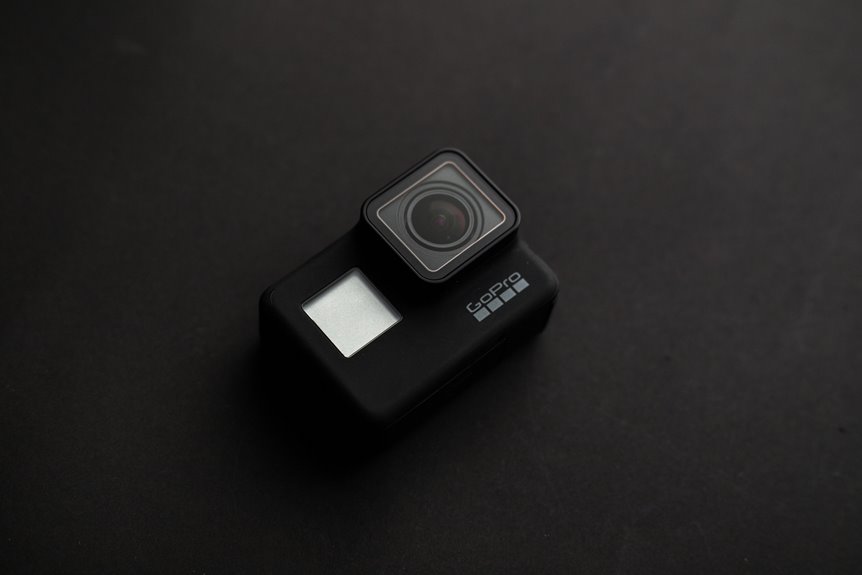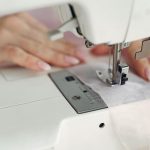When it comes to choosing the right waterproof membrane, you’ve got options like Gore-Tex, eVent, and several others. Each has its strengths and weaknesses, influencing your comfort and performance during outdoor activities. Understanding how these materials compare in breathability, durability, and technology can make a huge difference in your experience. So, which one should you pick for your next adventure? Let’s explore the details to find out what suits your needs best.
Table of Contents
Key Takeaways
- Gore-Tex is renowned for its durability and excellent waterproofing, making it a top choice for outdoor gear.
- eVent offers superior waterproofing with direct venting technology, enhancing moisture escape during high-intensity activities.
- Breathability is crucial; Gore-Tex typically exceeds 20,000 g/m²/24h MVTR, while eVent may provide even higher ratings for better comfort.
- Consider durability versus weight; Gore-Tex is robust, while eVent presents lightweight options without sacrificing durability for long hikes.
- Assess specific needs and conditions; balance cost, performance, and intended activities to choose the best membrane for your requirements.
Overview of Waterproof Membranes
When it comes to protecting structures from water damage, understanding waterproof membranes is crucial. These barriers prevent water infiltration, safeguarding your investment from costly repairs.
You’ll find various types of membranes, each designed for specific applications, from roofs to basements. They generally fall into two categories: sheet membranes and liquid-applied membranes.
Sheet membranes are pre-manufactured and easy to install, while liquid-applied options provide seamless coverage, adapting to any surface. The choice you make depends on factors like the environment, structure design, and budget.
Waterproofing Performance Comparison
While choosing a waterproof membrane, it’s important to compare their performance characteristics to guarantee you select the best option for your project. Each membrane, like Gore-Tex and eVent, offers unique attributes that impact their waterproofing capabilities.
Gore-Tex is renowned for its durability and effective waterproofing, making it a popular choice for outdoor gear. eVent, on the other hand, boasts superior waterproofing due to its direct venting technology, which allows moisture to escape more quickly.
Consider your specific needs—whether you prioritize extreme waterproofing, durability, or a balance of both. Always look at the membrane’s ratings and user reviews, as real-world performance can vary.
Evaluate your priorities—extreme waterproofing, durability, or a balance—while considering ratings and user experiences for informed decisions.
Ultimately, you want a membrane that reliably keeps you dry under the conditions you’ll face.
Breathability Metrics and Differences
How do you measure breathability in waterproof membranes? You’ll want to look at metrics like MVTR (Moisture Vapor Transmission Rate), which indicates how much moisture can escape from the inside of a garment. A higher MVTR means better breathability, helping you stay comfortable during intense activities.
Typically, membranes like Gore-Tex boast impressive MVTR ratings, often exceeding 20,000 g/m²/24h, while Event may offer even higher figures. You should also consider the fabric’s overall structure and the presence of microporous layers, which affect vapor movement.
Durability and Weight Analysis
Breathability is important, but durability and weight also play significant roles in choosing the right waterproof membrane. When you’re out in the elements, you need a membrane that can withstand wear and tear while keeping you dry.
Gore-Tex is known for its robust construction, making it a popular choice among outdoor enthusiasts. On the other hand, Event offers a lighter option without sacrificing durability, appealing to those who prioritize weight during long hikes.
Other membranes vary, with some being more fragile yet lightweight, while others might be bulkier but last longer. Ultimately, finding the right balance between weight and durability depends on your specific needs and activities.
Consider how each membrane performs in real-world conditions to make the best choice for your adventures.
Technological Advantages of Each Material
When you consider waterproof membranes, each material brings unique technological advantages that can enhance performance.
For instance, direct venting technology can provide better moisture management, while PTFE membranes offer superior durability.
Plus, some options allow for breathability without the need for a PU layer, giving you more flexibility in your choice.
Direct Venting Technology Benefits
While many waterproof membranes offer unique benefits, direct venting technology stands out for its impressive ability to manage moisture and maintain comfort.
This technology allows for efficient airflow, letting sweat escape while keeping water out. You’ll notice a significant reduction in clamminess during high-intensity activities, allowing you to stay dry and comfortable.
Direct venting systems are designed to adapt to changing weather conditions, ensuring you’re protected from unexpected rain without overheating.
Plus, the lightweight materials used in these membranes enhance your mobility, making them ideal for outdoor adventures.
PTFE Membrane Advantages
Direct venting technology offers impressive moisture management, but PTFE membranes bring their own set of advantages that elevate waterproof performance.
One key benefit is their exceptional durability; PTFE membranes are resistant to wear and tear, making them ideal for rugged outdoor use.
You’ll also appreciate their ability to withstand a range of temperatures without compromising performance, which guarantees you stay dry in various conditions.
Additionally, PTFE membranes are lightweight, allowing for comfortable wear without bulk.
Their chemical resistance means they can handle exposure to harsh environments without degrading.
This combination of durability, temperature resilience, and lightweight design makes PTFE membranes a top choice for those seeking reliable waterproof solutions in demanding situations.
Breathability Without PU Layer
Although many waterproof membranes rely on a polyurethane (PU) layer for breathability, advancements in material technology have led to options that achieve effective moisture management without it.
These innovative materials provide excellent airflow while maintaining waterproof properties. This means you can stay dry and comfortable in various conditions.
- Increased comfort: Enhanced breathability reduces sweat buildup, keeping you feeling fresh.
- Lightweight design: Materials without PU layers often weigh less, improving mobility.
- Durability: Non-PU membranes can have superior resistance to wear and tear.
- Eco-friendly options: Some alternatives use sustainable materials, reducing environmental impact.
- Versatile applications: These membranes can be used in various gear, from jackets to footwear, catering to different needs.
Practical Applications for Outdoor Activities
When you head outdoors for activities like hiking, camping, or kayaking, having the right waterproof membrane can make all the difference in keeping you dry and comfortable.
For hiking, a breathable membrane like Gore-Tex allows moisture to escape while blocking rain, ensuring you stay dry from both the inside and outside.
If you’re camping, choose a durable membrane that can withstand prolonged exposure to wet conditions, protecting you and your gear.
For kayaking, consider a membrane with excellent waterproofing and flexibility so you can move freely while staying dry.
Each activity demands specific features, so think about your environment and intensity level. Choosing the right membrane can enhance your experience and keep you focused on enjoying the great outdoors.
User Preferences and Recommendations
How do you choose the right waterproof membrane that fits your needs? Consider your specific activities and preferences. Each membrane has unique features that may appeal to you.
Choosing the right waterproof membrane depends on your activities and preferences, as each offers unique features tailored to your needs.
Here are some factors to keep in mind:
- Breathability: If you’re active, you’ll want a membrane that allows moisture to escape.
- Durability: Look for materials that can withstand rough conditions without tearing.
- Weight: Lightweight options are ideal for backpacking or long hikes.
- Cost: Determine your budget; high-end options like Gore-Tex offer performance but come at a price.
- Fit and Style: Choose gear that not only performs well but also looks good and fits comfortably.
Balancing these factors will help you find the best waterproof membrane for your adventures!
Frequently Asked Questions
How Do I Properly Care for Waterproof Membrane Jackets?
To keep your waterproof jacket performing like a trusty raincoat in a storm, always wash it in cold water, avoid fabric softeners, and air dry, ensuring it stays breathable and ready for your next adventure.
Can Waterproof Membranes Be Repaired if Damaged?
Yes, you can repair waterproof membranes if they’re damaged. Use a specialized patch kit designed for the material, and follow the instructions carefully. This’ll help restore their functionality and extend the life of your jacket.
What Is the Lifespan of These Waterproof Materials?
The lifespan of waterproof materials varies, but you’re generally looking at 5 to 10 years. Proper care and storage can extend their durability, so keep them clean and avoid excessive exposure to harsh conditions.
Are There Eco-Friendly Options for Waterproof Membranes?
Did you know that around 8 million tons of plastic end up in oceans each year? You can find eco-friendly waterproof membranes made from recycled materials or natural fibers, helping reduce waste while keeping you dry.
How Do I Choose the Best Membrane for My Needs?
To choose the best membrane, consider your activity level, weather conditions, and breathability needs. Research materials, read reviews, and test samples if possible. It’s essential to balance waterproofing with comfort for peak performance.






